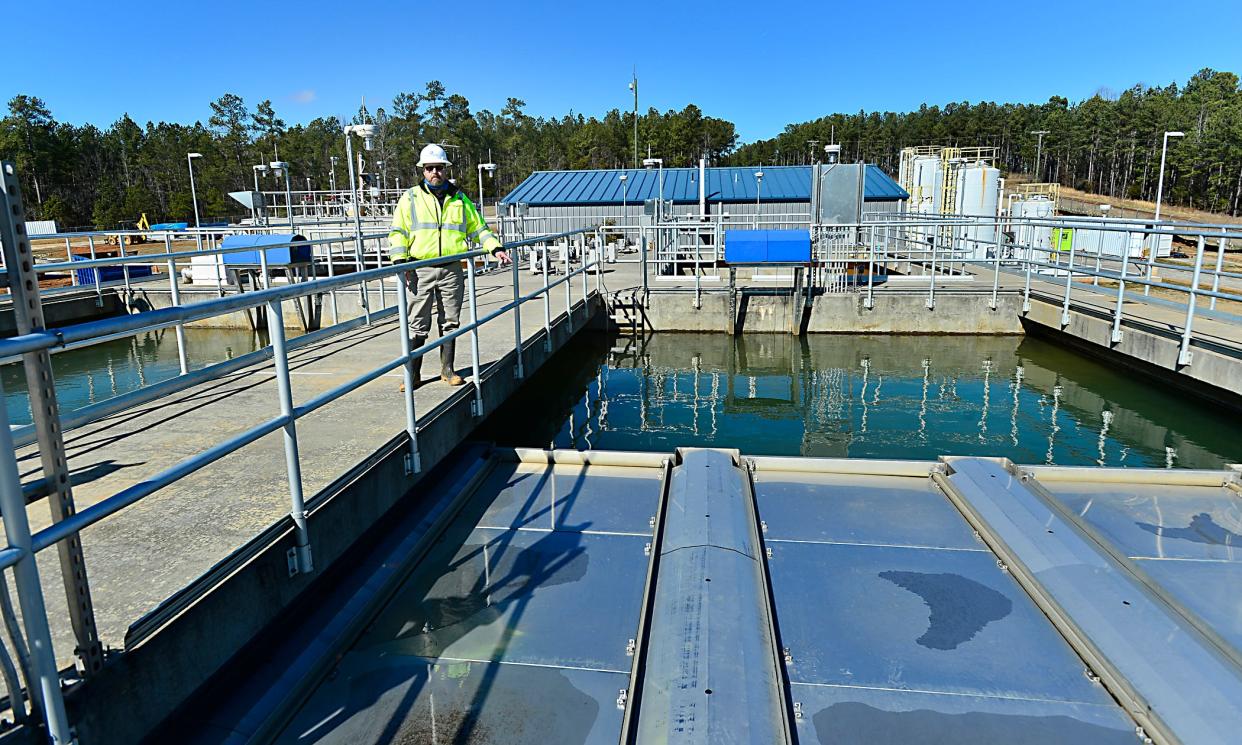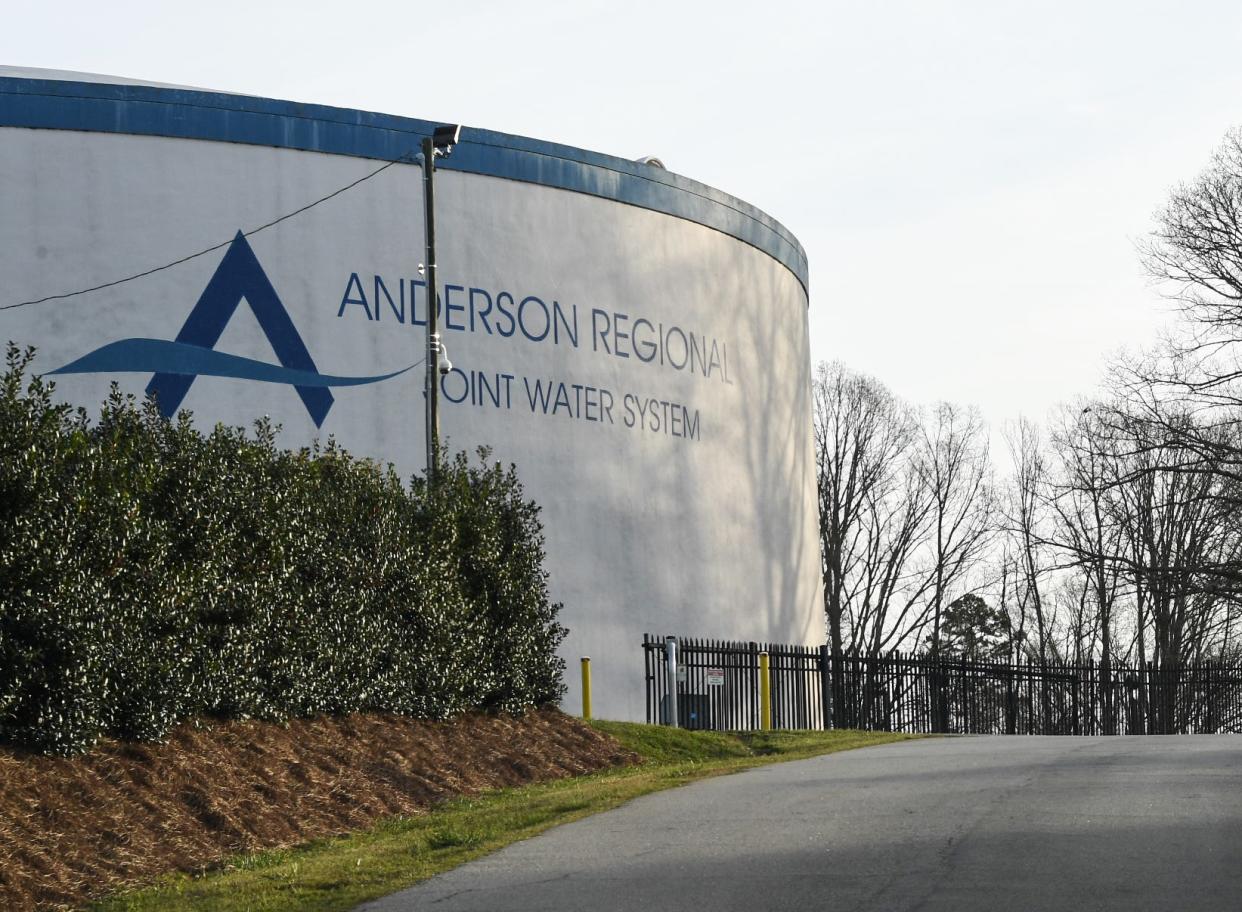The EPA set limits on 'forever chemicals': What does that mean for the Upstate?
In the midst of nationwide efforts to reduce people’s exposure to “forever chemicals,” or PFAS, some Upstate water systems could be forced to shift how they treat their drinking water. The price tag could be hefty, including for Upstate residents.
Manufactured perfluoroalkyl and polyfluoroalkyl substances, often called PFAS chemicals, can be found in items like rain jackets, non-stick coated cookware, stain-resistant carpets and even food wrappers and cosmetics. They’re unique because of their chemical bonds – they don’t break down.
The chemicals have also been linked to a variety of health issues. Some of those potential health issues are increased risks of cancer, infertility, changes in cholesterol and liver enzymes and changes in infants’ birth weights.
In April 2024, the U.S. Environmental Protection Agency officially released the first legally enforceable limits for the amount of six PFAS chemicals in drinking water. Water systems have until 2027 to monitor the chemical levels and make them public. Enforcement for the new rule begins in 2029.
DHEC’s Drinking Water & Recreational Waters Protection Director Doug Kinard said in a PFAS media briefing April 17 that they anticipate about 2 million South Carolinians will be affected by this new rule.

While public works managers in some of the potentially affected areas agree that clean water is a necessity, they worry about how much it will cost to meet the new EPA guidelines.
In Gaffney, where some of the highest concentrations of two PFAS chemicals were found in 2020, Public Works Assistant General Manager Steve Bratton said they are absolutely worried about the cost.
“We don't want our ratepayers to have to cover the cost for something that is not caused by them. We want the people who are responsible for them being present in our system to be responsible for the cleanup and for us having to treat to these new standards,” Bratton said. “Cost is a major concern for us here.”
Sustainability with Sarah: Why does polluted stormwater flow into rivers and lakes?
How are PFAS chemicals detected? Where are they in the Upstate?
PFAS stick around forever because of the strength of their chemical bonds.
David Andrews is a deputy director of investigations and senior scientist with the Environmental Working Group, a nonprofit that advocates for stringent chemical safety policies. He explained that carbon bonds to fluorine in PFAS compounds. That bond makes the compounds stick like glue.
"It's also what enables sustained repellency and the nonstick behavior. But it also makes these chemicals incredibly resistant to break it apart. And that's breaking apart in sunlight, in heat. If they fall into a volcano, they will break apart, but otherwise in the environment they’re incredibly stable," he said.
PFAS chemicals are found in water through samples.
South Carolina water systems have not been mandated to sample for PFAS by the state or the EPA, though some, like Greenville and Anderson Regional, have voluntarily sampled their water in recent years.
In 2020, South Carolina’s Department of Health and Environmental Control sampled water across the state to gauge PFAS levels. This sampling is the most recent comprehensive statewide data.

More: Greenville County accepts $1.5M in ARPA funds for projects to repair streams, deter floods
According to 2020 data from DHEC, a majority of the Upstate’s water systems did not have detectable levels of PFAS chemicals in their drinking water. However, there were several Upstate water sources that did find a range of certain PFAS chemicals that exceeded the now-enforceable limits.
There are thousands of chemicals that fall under the PFAS name. The EPA’s limit applies to six of the most common: PFOA, PFOS, PFHxS, PFNA, HFPO-DA and a mixture containing two or more.
Data from DHEC looked at perfluorooctanoic acid, or PFOA, and perfluorooctane sulfonic acid, or PFOS.
Based on the 2020 data, the Upstate water systems that could exceed the new PFOS and PFOA limits are:
Clinton
Gaffney
Greenwood
McCormick
Union
Woodruff-Roebuck
The EPA’s new limit is 4 parts per trillion for PFOS and PFOA chemicals. Gaffney’s 2020 report found PFOA levels between 12-18 ppt and PFOS levels between 12-14 ppt.
Gaffney’s public works board is pursuing litigation directed toward PFAS manufacturers DuPont and 3M. Bratton said he hopes it will offset the cost of some of the new equipment. He mentioned a facility in Rome, Georgia, that received money from a settlement with DuPont and 3M. The Rome facility’s new PFAS filtering equipment cost about $100 million, according to reporting from the Atlanta Journal-Constitution.
Sustainability with Sarah: What are the dos and don'ts of recycling?
Bratton said he doesn’t know where the chemicals come from, but he knows they’ll have to comply regardless.
"It's in our reservoir. We’ve got to deal with it, and we're going to do all we can to meet the EPA guidelines," he said.
In Woodruff-Roebuck, located in the southern part of Spartanburg County, Water District General Manager Kermit Johnson said he’s also worried about the cost of the new filtering equipment.
In 2020, their PFOA levels were between 5.9-6 parts per trillion and their PFOS levels were between 5.7-7.9 parts per trillion.
Johnson doesn’t know where the chemicals are coming from either.
"We don’t produce it, but it’s being put on our backs,” Johnson said. “We don’t put things in the water. We try to take it out."
The Biden administration is offering several billion in grants for small and disadvantaged communities, but it’s not likely that Gaffney or Woodruff-Roebuck will meet either of those criteria.

What’s next for water system testing?
Water systems will now begin testing for the chemicals. Testing will go through 2027 before the limits become enforceable in 2029.
Though it’s several years away, Bratton said it takes a long time to build the type of infrastructure that’s needed to remove the chemicals. Once the chemicals are removed, there’s also the problem of what to do with them.
"That is a fairly short period of time when you're talking about having to construct something of this size, especially when you have to come up with the funding to build it," he said.
Upstate Growth: Greenville and Spartanburg to see water rates increase
The Anderson Regional Joint Water System, which serves Anderson County, has been testing for PFAS for about a year. None have been detected, said Deputy Director Jeff Caldwell. The system gets its water from Lake Hartwell.
They sample the water each quarter, similarly to the practice that will be enforced at most large water treatment plants.
"What we have been doing is related to PFAS is sampling our raw water at our intake, and also sampling our finished water to make sure there's no appreciable differences between our source and what we're delivering to our customers," Caldwell said.
Caldwell said they aren’t looking at treatment right now because no PFAS have been detected, but if any are in the future, they plan to adjust quickly.

What can people do in the meantime?
Andrews suggests getting a household filter to lessen exposure to PFAS, like a granular activated carbon filter or a reverse osmosis filter.
"We actually did testing on the filters took over a year ago and found a number of different options that were that were very effective at eliminating the contamination in public tap water," Andrews said.
Those options can be found on the Environmental Working Group’s website.
The EPA also has a guide called Safer Choice to help people eliminate PFAS from their daily lives when they can.
Some water systems, like Greenville and Spartanburg, have addressed PFAS levels and testing directly with their customers. You can learn more about your water system on the DHEC website.
In the meantime, water systems will search for ways to test their water while they look for funding.
"We're reading and learning about this as we go just like everyone else is," Bratton said.
Sarah Swetlik covers climate change and environmental issues in South Carolina's Upstate for The Greenville News. Reach her at sswetlik@gannett.com or on X at @sarahgswetlik.
Have a question for Sustainability with Sarah? Ask here or email sswetlik@gannett.com.
This article originally appeared on Greenville News: Upstate water systems face new EPA guidelines for 'forever chemicals'
